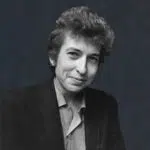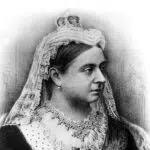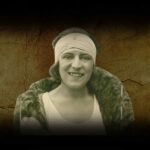Queen Victoria — full name Alexandrina Victoria — was born on May 24, 1819, at Kensington Palace in London. She succeeded her late uncle, King William IV, at the age of 18. She is still recognized for her six-decade rule, during which she oversaw the creation of the British Empire, earning her one of Britain’s most famous monarchs. Queen Victoria was the last of the House of Hanover, and she gave the Victorian era its name. During her time, the British monarchy adopted a more contemporary ceremonial style. She and her spouse — Prince Consort Albert of Saxe-Coburg-Gotha — had nine children, from whom many more of Europe’s royal dynasties derived and continued her legacy. On that note, join us in celebrating her big day.
Fast Facts
Full Name:
Alexandrina Victoria
Nickname:
Drina, Mrs. Brown, Mrs. Melbourne, The Grandmother of Europe, Widow of Windsor
Birth date:
May 24, 1819
Death date:
January 22, 1901 (age 81)
Zodiac Sign:
Gemini
Height:
4' 11"
Net Worth:
$632.1 million
Background
Alexandrina Victoria was the first child born to the Duchess of Kent. Her father was George III’s fourth son, and she was fifth in line to the throne. Following the deaths of two uncles, the adolescent Victoria became heir to her only remaining uncle — King William IV. Victoria inherited the kingdom from her uncle, William IV, only a few weeks after her 18th birthday. Her first request was for an hour to herself — which had previously been denied. On Coronation Day, 400,000 people lined the streets of London to watch the Queen be crowned at Westminster Abbey. Because she allowed her emotions to cloud her judgment early in her reign, the Queen made several unwise decisions. During her lifetime, the Queen — who frequently traveled in an open carriage —was the subject of eight attempts to assassinate or harm her.
When Prince Albert of Saxe-Coburg and Gotha visited Britain in 1839, Victoria found love with him, and both married soon after. Victoria became pregnant shortly after her wedding and gave birth nine months later. Victoria and Albert traveled to Scotland for the first time and felt it was romantic and daring. Albert was reminded of his birthplace in Germany by the Highlands. When the Queen visited the Inaugural State Opening of Parliament at the new Palace of Westminster, she established new royal customs. Victoria —with Albert’s help — established a publicly visible parliamentary system to quell Britain’s burgeoning republican movement. Victoria established the ‘Victoria Cross’ to recognize deeds of exceptional courage during the Crimean War. It was given based on merit rather than rank. The Royal Family was immortalized in a series of 14 photographs known as ‘Carte de Visites.’
Prince Albert died when he was 42 years old. Victoria was distraught and wore mourning for the remainder of her life. She was terrified after her son and heir Edward became sick with typhoid. Victoria became Empress of India to strengthen ties between the monarchy and the Empire. To commemorate her Golden Jubilee, the Queen invited Indian servants. Abdul Karim — one of them — was appointed to become her instructor or ‘Munshi.’ The Diamond Jubilee enhanced Victoria’s prestige. To commemorate the event, her likeness was imprinted on everything from mugs to mustard jars. Victoria was to have a day of global celebrations. Despite her restricted mobility, the aged Queen presided over many occasions. Victoria died after suffering from illness for several weeks. Her son and heir, Edward VII, and grandson, Emperor Wilhelm II of Germany, were by her side on her deathbed.
Victoria reigned for 63 years, seven months, and two days, making her the longest-reigning British monarch and queen regnant in history until her great-great-granddaughter Elizabeth II overtook her on September 9, 2015. Her son and successor, Edward VII, belonged to her husband’s House of Saxe-Coburg and Gotha, and she was the last monarch of the “House of Hanover.”
Career timeline
Victoria ascends the throne mere weeks after her 18th birthday — succeeding her uncle, William IV.
Her coronation takes place precisely a year later and a large audience gathers to witness and welcome their Queen.
Victoria falls in love with Scotland after visiting the country and begins writing a book about her experiences, which encourages people to visit the country more frequently, hence, increasing tourism.
The Queen is inactive for a year after her husband's death, and she marks her gradual return to public life with a highly orchestrated ceremony to build royal support.
On the recommendation of Prime Minister Benjamin Disraeli, Victoria becomes Empress of India to strengthen the monarchy and empire.
The Jubilee festivities honor the Queen while also reaffirming Britain's status as a worldwide power.
The Queen reigns over an empire of 400 million people spanning a quarter of the globe, and she never forgets the men who stood by her side.
Why We Love Queen Victoria
She was a bold queen
Victoria proposed to her spouse, which is something that not many women do, even today. Kudos, your Majesty.
If the queen hadn’t made this possible?
Victoria and her husband popularized the tradition of decorating Christmas trees and delivering them to Windsor schools and army barracks. We are extremely grateful; otherwise, we doubt we would have seen such lovely Christmas trees.
A pioneer
Victoria was the first monarch to take a train journey. This occurred in the year 1842. We love a fearless Queen.
5 Surprising Facts
Short in stature, but not in intellect
Victoria may have been small in stature but she ruled over a large portion of the independent globe.
The First Queen of Buckingham Palace
Victoria became the first ruling monarch to reside in Buckingham Palace immediately after she acceded to the throne.
Her challenging childhood
Victoria's mother utilized a stringent system of discipline to mold the Queen-to-be, commonly known as the Kensington System,’ to enhance her morality and intellect —this made Victoria's freedom appear implausible, and she never had time for herself.
Multilingual skills
The young queen was a skilled linguist, speaking both English and German fluently; in addition, she learned French, Italian, and Latin, and to communicate with her Indian attendants, the Queen mastered some Hindu and Urdu expressions.
Her foes were everywhere
Victoria enjoyed traveling in an open carriage, although she was nearly assassinated eight times throughout her lifetime.
Queen Victoria FAQs
How many children did Queen Victoria have?
She had nine children.
Was Queen Victoria a nice person?
Victoria did not always look so sober, jowly, and humorless but she was once very vibrant and lovely, with an arresting personality and huge amounts of energy for music, dancing, and staying up late.
How is Queen Elizabeth related to Queen Victoria?
Queen Elizabeth is related to Queen Victoria through her father’s side.
Queen Victoria’s birthday dates
| Year | Date | Day |
|---|---|---|
| 2026 | May 24 | Sunday |
| 2027 | May 24 | Monday |
| 2028 | May 24 | Wednesday |
| 2029 | May 24 | Thursday |
| 2030 | May 24 | Friday |











